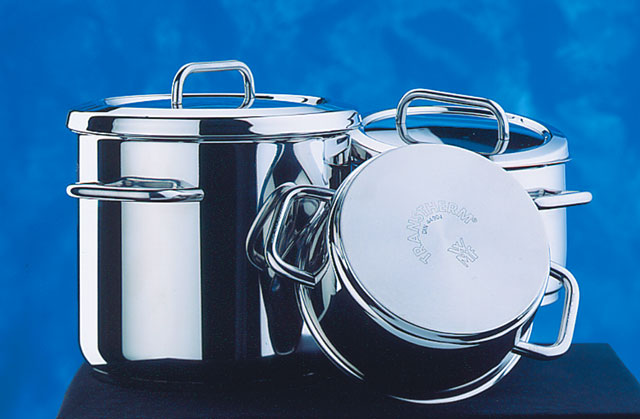Based on currently available information, there is no simple cleaning method for flux residues by washing or dissolving – i.e. there is no suitable solvent or chemical solution – without attacking (corroding) the substrate material as well.
Mechanical Cleaning
Usually, removal of flux residue can only be done by mechanical means. From solid surfaces and from robust joints, as well as from Stainless Steel fixtures, the flux residues can be mechanically removed by sand or grit blasting. Wire brushing is a second alternative for flux residue removal. We recommend using Stainless Steel wire brushes for cleaning. Rotating SS-wire brushed are suitable too – provided the surface areas are accessible. Brushes made from copper and brass should only be used when the cleaned surfaces are not exposed to any subsequent welding or brazing cycle any more, because copper traces from the brush (even dust particles) in contact with aluminum can cause severe erosion problems.
Chemical Cleaning
Flux residue has a slightly higher solubility in strong alkalis and some acids. But in many cases the base materials (aluminum or Stainless Steel) will be attacked (corroded) by these chemicals too.
A solution of hot boric acid (10 to 15%, 75 – 80°C) can be used to remove some of the flux residue from brazed assemblies. Aluminum dissolution by boric acid is relatively moderate. The immersion time necessary to remove the bulk of residues varies from 10 to 30 minutes. But even then the flux residue removal will not be 100% successful.
Handling (preparation and usage) and discharging (waste disposal) of such chemical solutions can be problematic and expensive – due to their corrosive properties and the subsequently necessary waste water treatment. Considerations for health, safety and environment must be in accordance with the Safety Data Sheets.
Ultrasonic cleaning
Ultrasonic treatment may be effective in removing flux residues, provided that the parts to be cleaned fit into the ultra sonic dipping bath. A detergent (cleaning agent) can be added to the solution to improve the cleaning activity. The use of Antarox BL 225 for ultrasonic cleaning treatment is probably feasible. However, when there are any other additional chemicals mixed with the Antarox-containing cleaning solution (particularly when adding acids or alkalis) their compatibility with Antarox must be verified.
There are commercial solutions available for ultrasonic cleaning of Stainless Steel. More information on this subject is available from suppliers for industrial cleaning chemicals.
Summary
Flux residue from NOCOLOK Flux can only be removed by mechanical means, i.e. using wire brushes or grit/ sand blasting. This is a very difficult and laborious procedure – and a very dirty one (dust formation!). Local exhaust and ventilation is needed in the work area where the parts are cleaned. There is no suitable solvent to take off the flux residue without corroding the base materials.

